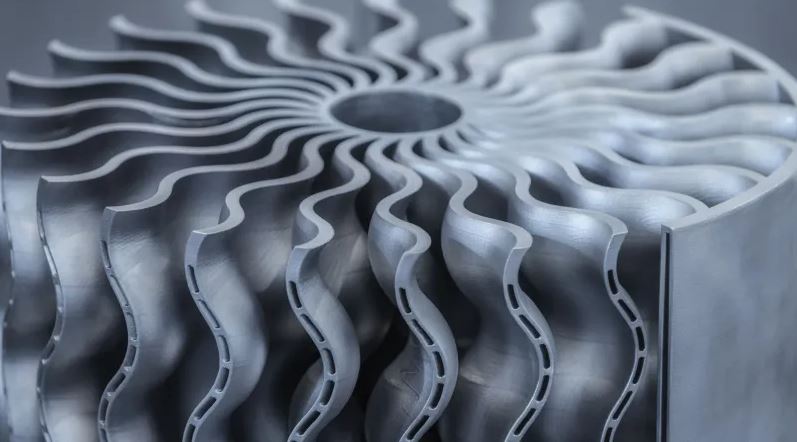Industrial Computed Tomography (CT) and Additive Manufacturing (AM) are two rapidly advancing technologies that have seen increasing adoption across various manufacturing industries. The intersection of the two technologies represents a powerful synergy, enabling novel capabilities and enhanced quality control in the world of 3D printing. Here’s a closer look at the role that industrial CT plays in additive manufacturing:
Quality Assurance and Inspection
Geometry Verification: Industrial CT allows for the non-destructive inspection and verification of the printed parts’ geometries. It can detect defects, such as warping, voids, or inaccuracies in complex geometries, which can be challenging to identify through traditional methods.
Porosity Detection: In metal additive manufacturing, porosity can be a significant concern. Industrial CT scans can identify and quantify porosity, helping manufacturers optimize their printing processes and improve part quality.
Material Analysis
Material Density and Homogeneity: CT scans can provide information about the material’s density and homogeneity. This is crucial for ensuring that the material properties meet the required standards, especially in critical applications like aerospace or medical devices.
Crack and Delamination Detection: Industrial CT can identify cracks and delamination within the printed structure. This is essential for assessing the structural integrity of 3D-printed parts, particularly in applications where safety and reliability are paramount.
Dimensional Verification
Tolerance Assessment: Industrial CT can be used to precisely measure the dimensions of 3D-printed parts and compare them to the design specifications. This ensures that the parts meet the required tolerances.
Reverse Engineering: CT scans can serve as a basis for reverse engineering, allowing the creation of 3D models of printed components for analysis, modification, or replication.
Process Optimization
Defect Analysis: Industrial CT scans can help pinpoint the cause of defects in 3D-printed parts. This information is invaluable for optimizing the printing process, reducing waste, and improving production efficiency.
Support Structure Evaluation: CT scans can assist in evaluating the effectiveness of support structures in additive manufacturing. This is crucial for removing supports without damaging the final part.
Design Validation
Complex Geometry Assessment: CT scanning is particularly useful for assessing and validating complex, lattice, or internally structured 3D-printed parts. It can ensure that such intricate designs are manufactured correctly.
Assembly Verification: In cases where multiple 3D-printed components are assembled, CT scans can help ensure the components fit together accurately, reducing the risk of assembly issues.
Research and Development
Material Development: CT scanning can be used in the research and development of new 3D printing materials, as it provides insights into material properties, such as porosity and structural integrity.
Process Improvement: CT scans are instrumental in R&D efforts aimed at improving additive manufacturing processes and equipment. They can aid in the development of new printing technologies and materials.
Industrial CT and Coordinate Measuring Machines (CMMs) both have their advantages as measurement technologies; CT scanning offers several additional benefits over CMMs for AM applications including:
Comprehensive Internal Inspection: CT scans can provide a complete internal inspection, revealing not only external dimensions but also any internal defects, voids, and material density variations. This is critical for assessing the integrity of complex components or additively manufactured parts.
Complex Geometries and Hidden Features: CT scanning excels in inspecting complex geometries, assemblies, and parts with hidden features. It can visualize and measure intricate internal structures, like internal channels in a heat exchanger or conformal cooling channels in 3D-printed components.
Speed and Efficiency: CT scanning is relatively quick and can inspect multiple features and dimensions simultaneously. It is especially efficient for batch inspection of similar parts.
Full-Field Inspection: CT provides full-field data, creating a 3D representation of the entire object. This is advantageous for capturing complex shapes and deformations across the entire part.
Ease of Handling and Fixturing: Industrial CT scanning often requires less complex fixturing, as can capture a wide range of positions and orientations simplifying the setup process.
Greater Data Density: CT scans produce vast amounts of data points, resulting in a denser and more comprehensive data set. This can be particularly useful for in-depth analysis and quality assurance.
Industrial CT scanning offers distinct advantages for non-destructive internal inspections, complex geometries, hidden features, and overall efficiency.
In conclusion, industrial Computed Tomography plays a vital role in additive manufacturing by enhancing the quality control and assurance processes. It allows manufacturers to assess the structural integrity, material properties, and dimensional accuracy of 3D-printed parts, enabling them to produce components that meet high standards of reliability and performance. This partnership between CT scanning and additive manufacturing is driving advancements across numerous industries, from aerospace and automotive to healthcare and beyond.
Subscribe to AM Chronicle Newsletter to stay connected: https://bit.ly/3fBZ1mP
Follow us on LinkedIn: https://bit.ly/3IjhrFq
Visit for more interesting content on additive manufacturing: https://amchronicle.com


